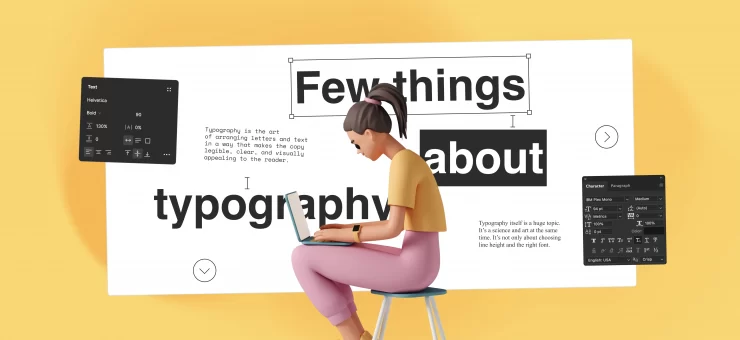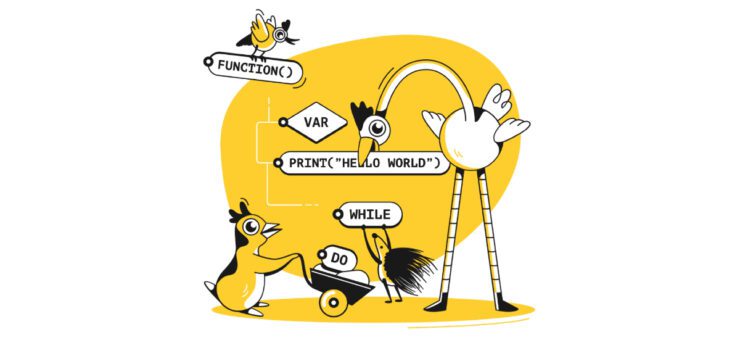When designers are working on projects for users, it’s important to always have the mindset of creating something that will solve user’s problems while also accomplishing their needs. Certainly, there’s also a place for creativity and self-expression—though this shouldn’t be the designer’s main focus. In order to truly understand the needs and wants of a user, it’s necessary to have empathy as a designer.
Empathy is a word that’s creating quite the buzz in the industry, for many reasons. In UX design, where enhancing user satisfaction is important, empathy is a critical skill—on par with mastery of design tools like those in Adobe Creative Suite.
To state things simply: empathizing allows designers to understand users better. Empathizing helps designers to look deeper into situations in a way that helps them to think and create solutions for problems.
Research by William Hudson in 2009 suggested that people working in the technology field (more specifically, males), have lower empathy. If there is a disconnection between the designer and the user, the project won’t progress smoothly. It’s a simple cause and effect relationship.
So, in order to fight what may be your natural tendencies when it comes to design, or simply to understand a current knowledge gap that can be overcome, let’s take a deeper look at empathy in UX design.
What Is Empathy?
Before we dig too deep, let’s consider the root of the word, “empathy”.
Empathy is the ability to understand other people’s feelings. It is about becoming aware of what other people feel and sharing their emotions. It serves as a way to link yourself and another person together. When talking about “putting yourself in someone else’s shoes”, you’re referring to empathy.
Empathy is often confused with sympathy.
While empathy involves sharing the feelings or emotions of another person by putting yourself in his/her position, sympathy is a feeling expressed for someone else. Sympathy is the act of showing concern or compassion for someone else.
The importance of empathy in the design is becoming more and more obvious each day. It is considered as a skill. The good news? It can be developed.

Credits: Uber Design
How To Be More Empathic Designer
If you’re worried that empathy isn’t a skill that you currently possess: don’t sweat it. There’s still hope for you!
There are many ways to improve your baseline empathy skill to become more effective and understanding—not only as a designer but as a person.
Here’s what you can do to develop the skills required to have more empathy in UX design.
1. Learn to be a Good Listener
Everyone knows how to listen, but not everyone knows how to be a good listener.
If you want to understand your users, listen to them, and listen well to achieve deep understanding and comprehension.
Listen not only with your ears but with all your senses. Be present and attentive. While communicating, learn to observe not only what is being said, but also how it is being said.
Temporarily block your inner conflicts and opinions until the other person is finished. Don’t be thinking about your response and waiting to blurt it out as soon as the other person stops talking.
When applying this idea to empathy in UX design, consider adding a website mechanism that randomly polls users about their browsing experience, with the opportunity to add feedback. A tool like Typeform can help you do this.
Typeform is a tool used to create visually pleasing and easy to complete surveys. This survey form can be customized to fit in with the branding and UI of your website and is easily embedded without much technical skill required.
Simply ask users to fill in a survey form to give feedback, perhaps offering an incentive or the chance at a reward in return for their time. Other popular alternatives for seeking user feedback include Jotform Survey Maker, Google Forms, Survey Monkey, and Hubspot surveys.

Credits: Dropbox
2. Improve Your Observation Skills
Not everyone is willing to come out and say which exact part of your user experience is failing them. In fact, they might not know how to describe it! Consider Henry Ford’s famous quote, “If I had asked people what they wanted, they would have said ‘faster horses”.
In the physical world, you’ll want to learn how to pay attention to body language, environments, and expressions (non-verbal). While communicating, carefully observe the other person’s actions while the interaction is ongoing. If you run an online business, see what you can do to have meetings over video conferencing solutions like Skype instead of defaulting to a phone call—where body language is completely lost.
And when it comes to observing users that you can’t talk to, consider tools like Inspectlet and Google Analytics. Inspectlet allows you to record actual (anonymous) user sessions to see exactly how people are experiencing your design.
Google Analytics can give you additional data regarding how people are using your website and can help with uncovering potential problem areas. Creative Bloq provides guidance for a few ways to use Google Analytics insights to improve UX:
- Use the Behavior Flow report to see how users move from one page to another on your website.
- Analyze event tracking on your website to see which specific actions users take while navigating around.
- Use the Navigation Flow report to see where users initially came from in order to get into your website and where they go after accessing your that first landing page.

Credits: Marvel
3. Don’t be Afraid to Ask Other People for Input
It all comes down to interaction. Don’t be afraid to ask people to explain their experience or position. This is the most direct way of understanding other people but also the least used method.
Friends and colleagues in your group can be good for surface level insights but it’s likely that they will focus only on positive feedback, to avoid hurting your feelings. Because of this, your time seeking feedback may be better spent with people not directly connected to you, who aren’t afraid to tell it like it is.
To get the best feedback, consider the following tips:
- Make the person as comfortable as possible before asking for feedback. Be mindful to carefully and politely ask for their input, to avoid sending wrong signals and getting misunderstood for being too direct.
- Do not surprise, or abruptly ask them out of nowhere. Give people time to review your work to make a careful analysis.
- Be direct in terms of what feedback you’re looking for (a specific design feature, for example) so that they know where to focus when responding to you.
- Ask what they do NOT like. It’s better to focus on finding issues in need of improvement than seeking out a pat on the back for something done well.
- Be sure to ask the right people for feedback. Direct users are the best source of actionable insights.

Credits: Moose
4. Be Mindful of Your Own Attitude
When interacting with the people you seek to empathize with, remember that you’re doing it to understand, find solutions, and build relationships with other people.
The point is not to weigh your opinion with theirs or to prove your own points. Be open-minded and welcoming when it comes to other people’s opinions.
5. Learn How to Adopt Humility
Adopting humility naturally improves your empathic behavior because it shows how you value others above yourself. Admitting your own shortcomings takes a lot of courage but it’s necessary for forward motion with it comes to empathy in UX design.
Being able to do this means you have understood what is right for your users, rather than just for yourself.
6. Do Your UX Research to Stay on Top of Trends
UX design is a new and evolving field. To stay on top of news and trends, you’ll want to consider the following resources:
Podcasts: Check out the UX Intern and this list of notable UX design podcasts.
TED Talks: Open your mind with the TED talk: “The Art and Design of Empathy in Everyday Life” by Jason Kehrer. Then, check out these other TED talks about design thinking.
Books: These books will help enhance empathy across design and beyond!
[embedyt] https://www.youtube.com/watch?v=wFP-_xEmPbU[/embedyt]
While you’re at it, consider creating your own study of UX design. Directly interface with users to gain valuable insights with regards to how they interact with your product. A well-designed user testing focus group can provide a multitude of ideas for design improvement.
Don’t forget to debrief results with other members of your team for greater insights and ideas that aren’t limited to one department.
Final Thoughts: Empathy in UX Design
An empathic approach to UX design is an important step towards improving both your people skills, as well as the end products that will reach your users.
User experience can be a fairly subjective matter and it certainly varies from person to person. One user won’t have the exact same experience as another user. Thus, having empathy in UX design can require a significant effort.
Luckily, empathy is a skill that can be developed with practice. And it’s not just designers that should work on it—every human being can benefit from developing the skills required for connecting with others.
What are some of your favorite examples of empathy in UX design? Tweet at @Icons_8 and we’ll share the best examples with our followers!
About the author: Maddy Osman from BlogSmith
Title illustration by Jack Daly for InVision
Explore the ways to build accessibility of UX, read how UX design builds trust and loyalty for your website and read about voice interface design



